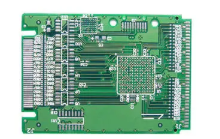In terms of cleaning ability, the chlorofluorocarbon trichlorotrifluoroethane (CFC-113 for short) in the solvent we use has high degreasing efficiency, strong solubility for flux residues, volatile, non-toxic, non-flammable and non-flammable. It has the advantages of explosion, no corrosion to electronic components and PCB, and stable performance. It is an ideal solvent. However, it has a destructive effect on the atmospheric ozone layer and seriously endangers the living environment of mankind. In 1987, the governments of Montréal, Canada signed the Ozone Layer Protection Agreement-the Montreal Protocol on Ozone Depleting Substances. The industry has continued to explore and seek better alternative cleaning solvents that prohibit the use of ozone depleting substances (ODS). So far, there is no solvent that can be completely replaced and is excellent in cleaning ability.
What is the difference between PCBA water cleaning machine and traditional circuit board cleaning?
Most of the small and medium-sized foundries or manufacturing plants use manual cleaning methods based on cost considerations. That is, use an anti-static brush to moisten the cleaning agent on the PCB.

Tilt the PCB to a 45° angle and brush from top to bottom with a brush to let the cleaning agent dissolve the residue and then flow down with the cleaning agent. It is mainly used for local cleaning or cleaning of PCBA with components that cannot be cleaned on some PCBs. Although this process method is simple, it is inefficient and consumes a lot of cleaning agent.
4 situations where PCBA residues need to be cleaned
1Rosin in PCBA board flux:
Most of the white substances produced after cleaning, storage, and solder joint failure are inherent rosin in the flux. Rosin is usually a transparent, hard and brittle solid substance with no fixed shape, not a crystal. Rosin is thermodynamically unstable and has a tendency to crystallize. After the rosin crystallizes, the colorless and transparent body becomes a white powder. If the cleaning is not clean, the white residue may be the crystalline powder formed by the rosin after the solvent volatilizes. When the PCB is stored under high humidity conditions, when the absorbed moisture reaches a certain level, the rosin will gradually change from the colorless and transparent glass state to the crystalline state, and form a white powder from the viewing angle. The essence is still rosin, but the shape is different, it still has good insulation, and will not affect the performance of the board. The rosin acid in the rosin and the halide (if used) are used together as an active agent. Artificial resins usually do not react with metal oxides below 100°C, but they react quickly when the temperature is higher than 100°C, they volatilize and decompose quickly, and have low solubility in water.
Rosin deformation of 2PCBA board:
This is the substance produced by the reaction between rosin and flux during the soldering process of the board, and the solubility of this substance is generally very poor, and it is not easy to be cleaned. It stays on the board and forms a white residue. However, these white substances are all organic components, which can still ensure the reliability of the board.
3 Organometallic salt on PCBA board:
The principle of removing oxides on the soldering surface is that organic acids react with metal oxides to form metal salts that are soluble in liquid rosin, which forms a solid solution with rosin after cooling, and is removed with the rosin during cleaning. If the welding surface and parts are highly oxidized, the concentration of the products after welding will be high. When the oxidation degree of rosin is too high, it may remain on the board together with undissolved rosin oxide. At this time, the reliability of the board will be reduced.